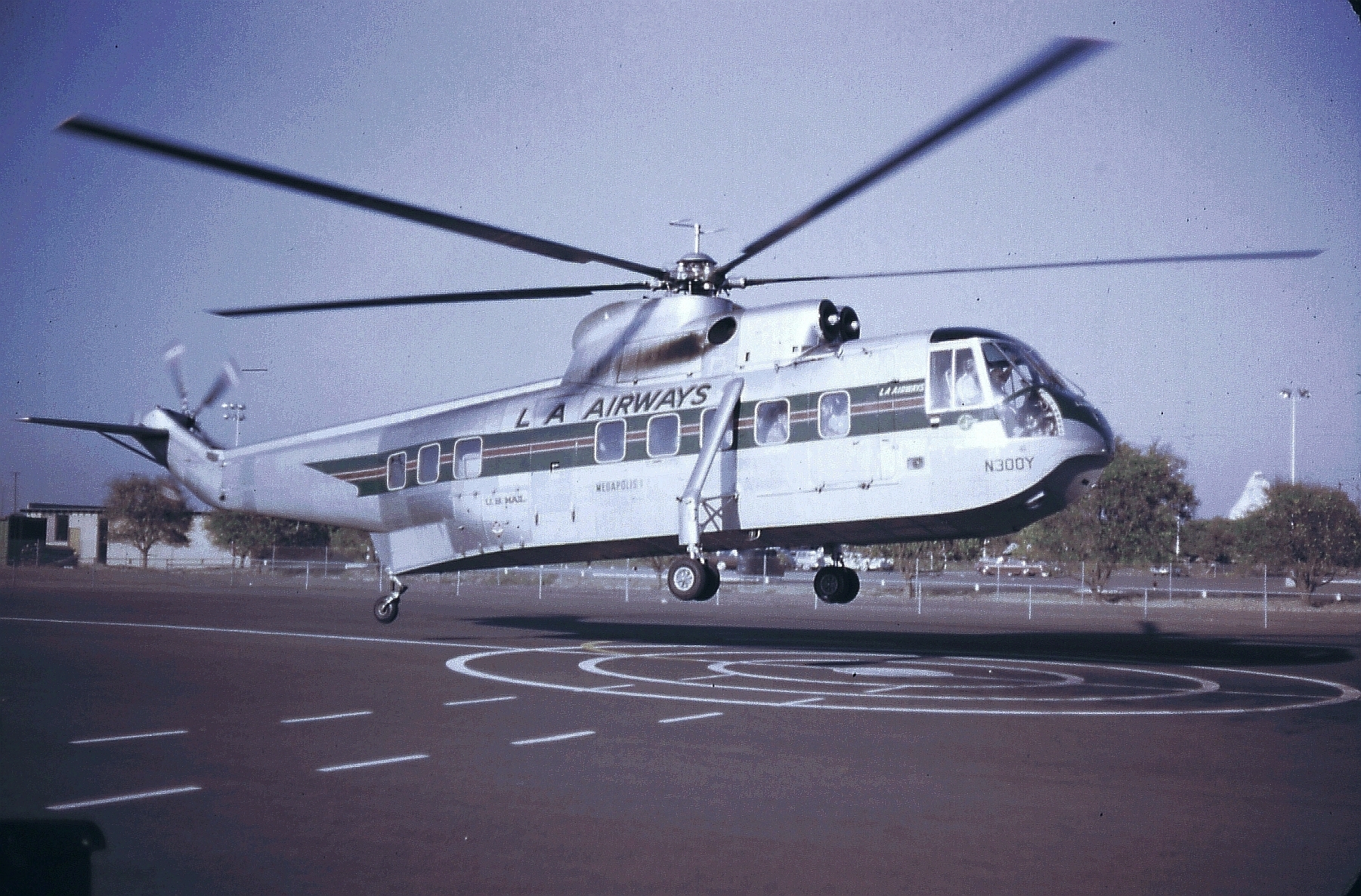
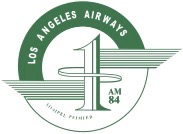
At approximately 10:35 a.m., while flying at an estimated altitude of 1,200–1,500 feet (370–460 meters) above the ground, one of the helicopter’s five main rotor blades separated from the aircraft which immediately went out of control, started to break up, and crashed in a recreational park in Compton. All twenty-one persons on board, including the 13-year-old grandson of the airlines’ founder and CEO, were killed.
The Sikorsky S-61 was registered N300Y. It had been the prototype S-61L, serial number 61031. Los Angeles Airways was the first civil operator of the S-61, purchasing them at a cost of $650,000 each. As of the morning of 14 August 1968, 61031 had accumulated a total of 11,863.64 hours flight time on the airframe (TTAF). It flew an estimated 3.17 hours on the morning of the accident.
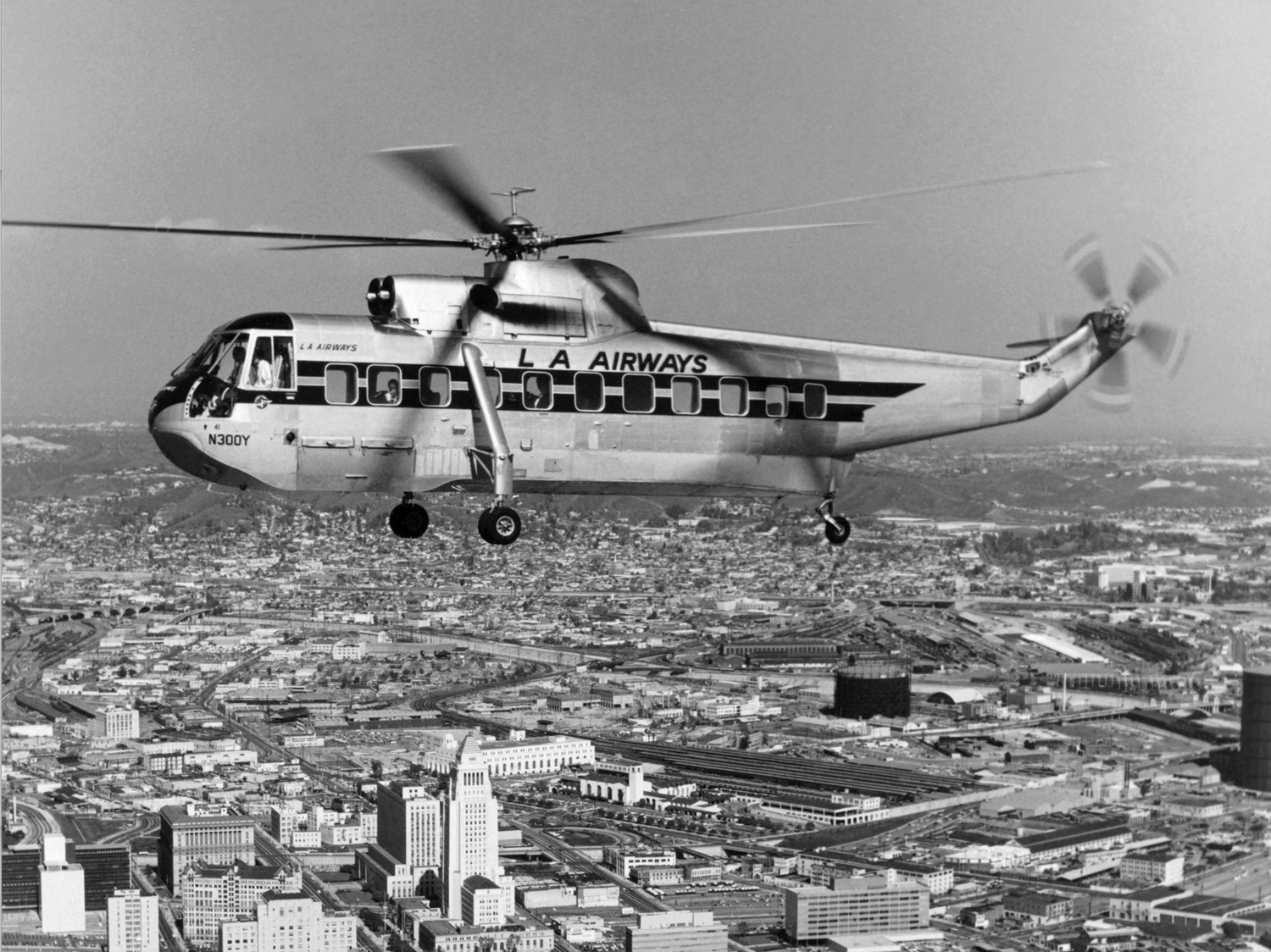

The main rotor has five blades and a diameter of 62 feet (18.898 meters). Each blade has a chord of 1 foot, 6.25 inches (0.464 meters). The tail rotor also has five blades and a diameter of 10 feet, 4 inches (3.149 meters). They each have a chord of 7–11/32 inches (0.187 meters). At 100% r.p.m., the main rotor turns 203 r.p.m. and the tail rotor, 1,244 r.p.m. The main rotor turns counter-clockwise, as seen from above. (The advancing blade is on the helicopter’s right side.) The tail rotor turns clockwise, as seen from the left side. (The advancing blade is below.)
The S-61L was powered by two General Electric CT58-140-1 turboshaft engines, each of which was rated for 1,400 shaft horsepower for takeoff and maximum power of 1,500 shaft horsepower for 2½ minutes. The main transmission was rated for 2,300 horsepower, maximum.
The S-61 has a cruise speed of 166 miles per hour (267 kilometers per hour). The service ceiling is 12,500 feet (3,810 meters). 61031 had a maximum takeoff weight (MTOW) of 19,000 pounds (8,618.3 kilograms).
Between 1958 and 1980, Sikorsky built 794 S-61 series helicopters. 13 were S-61Ls.
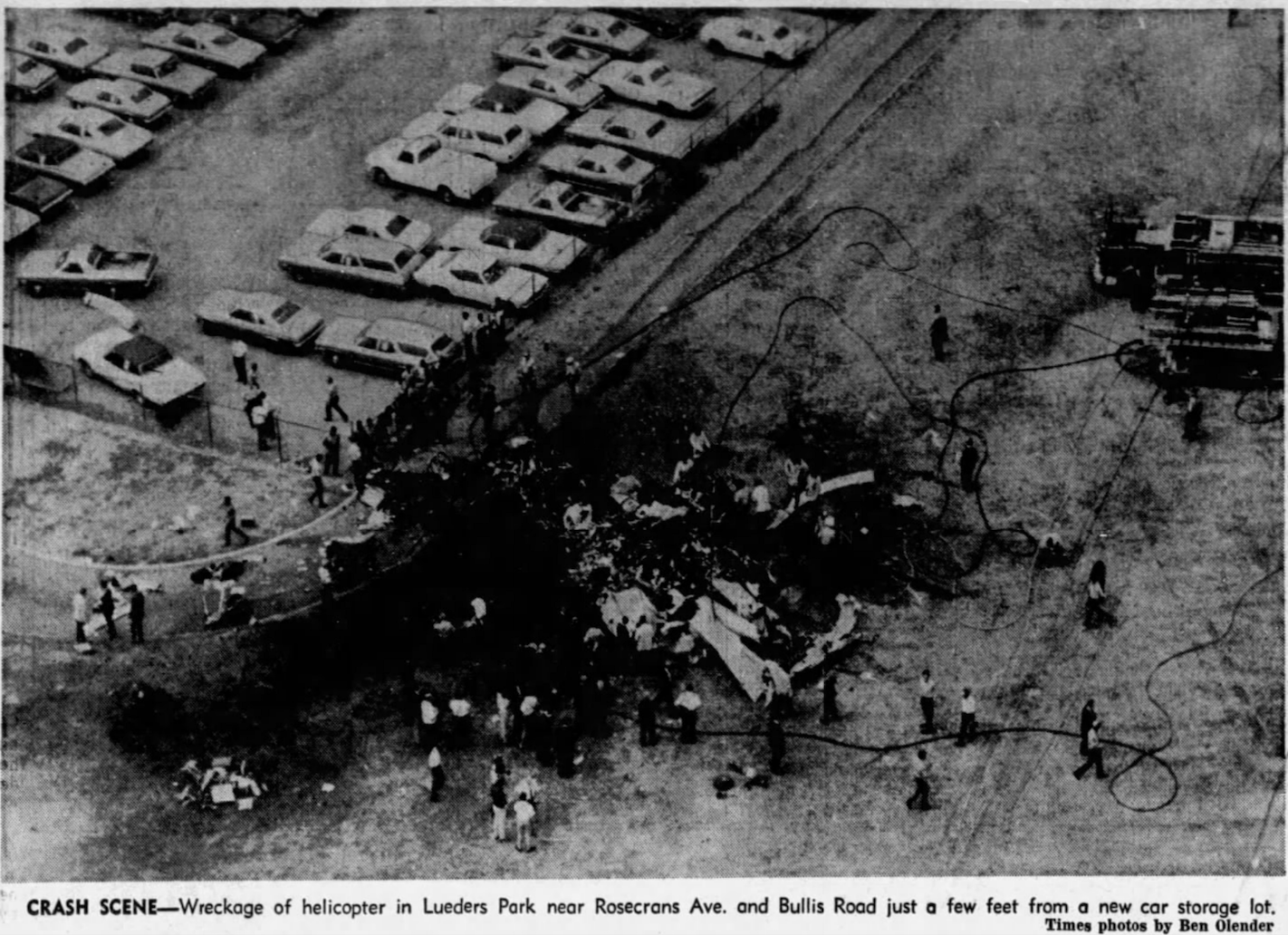
The National Transportation Safety Board investigation found that most of the helicopter was contained with a small area of Leuders Park. One main rotor blade, however, was located approximately 0.25 miles (0.40 kilometers) west of the main wreckage. This blade is referred to as the “yellow” blade. (The main rotor blades marked with colored paint for simplicity, red, black, white, yellow, and blue.) Analysis found that this blade’s spindle, where it attached to the main rotor hub assembly, had failed due to a fatigue fracture. It was believed that the fracture began in an area of substandard hardness which was present in the original ingot from which the part was forged, and that inadequate shot-peening of the part during the overhaul process further weakened the spindle.
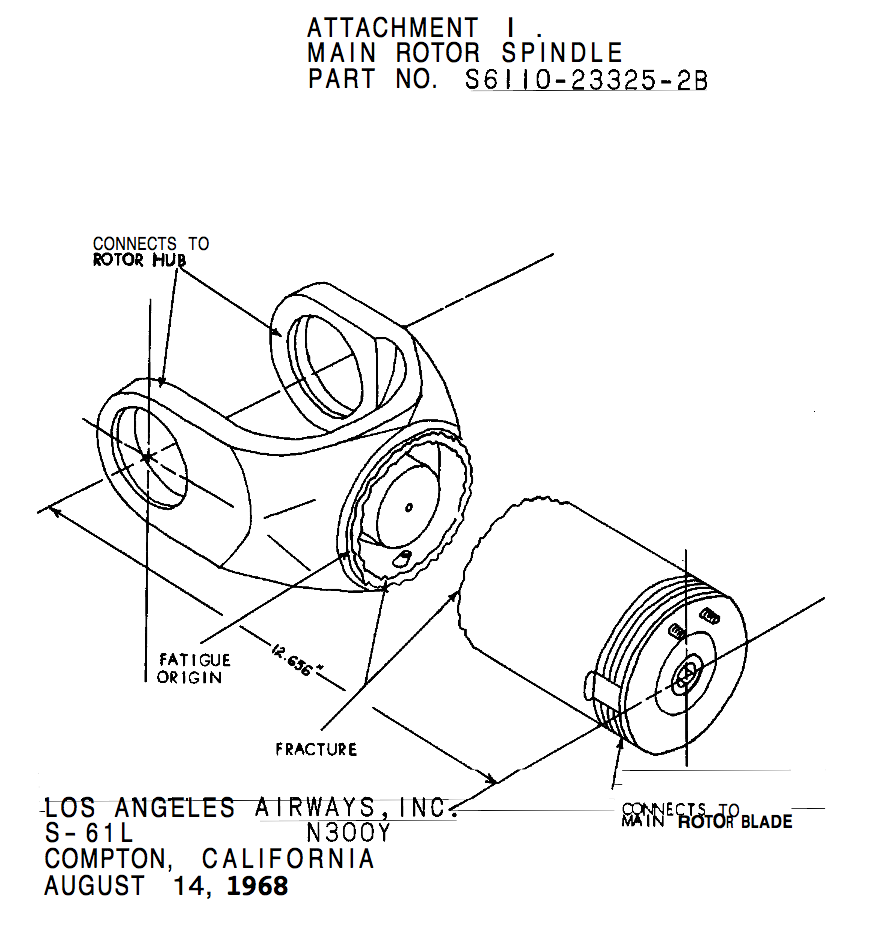
Los Angeles Airways had experienced a similar accident only three months earlier which had resulted in the deaths of all 23 persons on board. (Flight 841, 22 May 1968). L.A. Airways never recovered from these accidents and ceased all operations by 1971.
© 2016, Bryan R. Swopes
Why weren’t all S-61 helos grounded after the accident prior to this event? Shouldn’t there have there been inspections and analysis done before another passenger flight was permitted?
Thank you, David. Actually, I don’t know whether the remaining 11 S-61Ls were grounded or not.
This accident followed the loss of another Los Angeles Airways Sikorsky S-61L, 12 weeks earlier. (See TDiA, “22 May 1968” at https://www.thisdayinaviation.com/22-may-1968/ )
Both accidents involved the main rotor system, but resulted from completely different causes. The investigations took some time. The F.A.A. has always had a conflict because of its dual purpose: while it regulates aviation, it also is to PROMOTE aviation. Could this have kept it from grounding the S-61L fleet (only 13 aircraft)? I would be speculating. Today, though, it seems likely that a grounding order and mandatory inspections would be required.
The main rotor blades are most likely common to all 61 models and would have required grounding the entire production run to date of the accident
Yes, but the FAA does not have authority over the military 61 fleet.
There was two crashes with one in British park in Lynwood, California
Where was the second crash
Jim. on 22 May 1968, Los Angeles Airways Flight 841, Sikorsky S-61L N303Y, crashed on Alondra Boulevard near Minnesota Street in the city of Paramount, California.